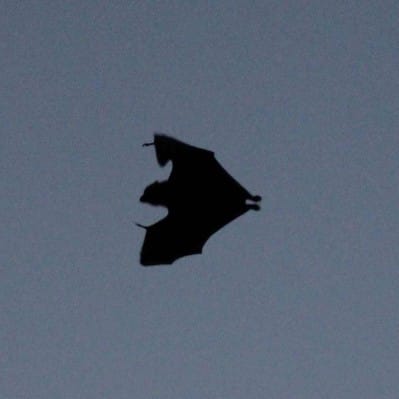Melbourne goes batty for new exhibition
Batmania has hit Melbourne with the opening of a new exhibition by artist Kathy Holowko, who hopes to engage locals with the plight of the endangered Australian fruit bat.


By MATTHEW SIMS
A new art installation at Federation Square named Batmania is bridging the gap between Melbournians and the now-endangered Australian fruit bat.

Just 20 minutes from the centre of Melbourne, by the side of the Yarra River 20,000 fruit bats call Yarra Bend Park home.
As the sun dips down, they fill the sky like silhouettes of bomber jets. However, few people make the effort to watch this daily spectacle.
Batmania aims to change this by featuring 200 realistic bat sculptures hanging from the ceiling of The Atrium in Federation Square.

Melbourne artist Kathy Holowko created the exhibition along with others from the bat-loving community of Melbourne as part of Federation Square’s Creative Program.
Holowko said she had long been fascinated by the creature and thought they should be celebrated rather than feared.
“I know that the bats have had a history in our psyche of not being popular, but you only need to get a little bit closer to find out they are really deserving of our attention as well,” she said.
“They have been here, evolving with our forest for a million years and things are changing really quickly.”

The fruit bat or grey-headed flying fox is native to Australia and can be found along the southeastern coastline, with up to 35,000 living in Melbourne.
The population is back on the rise after the main colony was relocated from Melbourne Royal Botanical Gardens to Yarra Bend Park in Fairfield 12 years ago.
A recent survey conducted by The Melbourne Mega Bat Count totalled 20,000 bats living in the Yarra Bend Park colony alone.
However, the species remains endangered due to starvation, destruction of habitat, illegal culling by orchardists and electrocution on electrical wires.
Environmental groups and activists see the exhibition as an opportunity to open up the conversation about the fruit bat and to find sustainable solutions for their long-term survival among the dangers of urban Melbourne.
Victorian Advocates for Animals president Lawrence Pope said 95 per cent of the fruit bat population had been destroyed since European settlement and the species could be extinct by 2050 if action wasn’t taken to ensure the coexistence of urban and natural life.
“If you care about Australia, you have to care about its animals,” he said.
While Mr Pope said Melburnians have begun to “take them to heart”, he recommended the use of special netting that would not entangle the bats and the planting of native trees to help in their survival.
Mr Pope said up to 100 species of Australian flora depended on the pollination provided by the fruit bat.

Volunteer bat carer and rescuer Louise Bonomi said grey-headed flying foxes were facing danger from being forcefully removed from their habitat in other areas of Australia.
Local councils in New South Wales, Queensland and the Victorian town of Bairnsdale are using sirens, smoke bombs and water cannons to disperse the colonies.
“These practices are highly ineffective, as well as inhumane and stressful to the bats,” Ms Bonomi said.
Australian Research Centre of Urban Ecology deputy director Rodney van der Ree said the fruit bat population was still increasing in Victoria but it was hard to know what the Australia-wide population was.
The CSIRO has undertaken a national count of the fruit bat.
Mr van der Ree said bats were slowly being accepted as “part of life in Melbourne” and Holowko’s Batmania positively expressed this relationship between the city and the fruit bat.
Holowko said the key to the survival of this endangered species was simply to “get to know them”.
“They are a silhouette in the sky to most people, or a freaky sound in a tree, but go down to the colony during the day and you can see them interacting with each other.”
“The more people that love them, when it comes to the time when there is a problem, more people will be behind them,” she said.
“I think Melbourne can be a bit prouder of the way we have handled this coexistence and habitat-sharing.”





